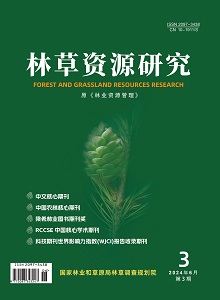In order to find out the adaptability of the woody fern Alsophila spinulosa to the water-deficient environment,three-year-old seedlings were selected and potted to control water for continuous drought stress and rehydration treatment.The changes of osmotic adjustment substance content,malondialdehyde(MDA)content and antioxidant enzyme activity in the leaves were studied after 3,6,8 days of drought and after 3,6,and 9 days of rewatering.The results showed that:1)With the prolongation of the continuous drought time,the soluble sugar content,proline content,superoxide dismutase(SOD)activity and peroxidase(POD)activity increased first and then decreased.The maximum value was reached at 3 days of drought;the contents of soluble protein and malondialdehyde increased gradually,and reached the maximum at 8 days of drought;The catalase(CAT)activity showed a trend of first decreasing and then increasing.Its activity was the highest when adequately watered.2)At 9 days after rehydration,the soluble sugar content,proline content,POD activity,and CAT activity had recovered to the levels below those under adequate water supply;the soluble protein content,MDA content and SOD activity were still slightly higher than those under adequate water supply.It could be seen that under drought stress,the soluble protein content had been increasing,which played a relatively important role in the resistance to drought stress;The soluble sugar content,proline content,SOD activity and POD activity responded rapidly and increased,but began to decline after 3 days of drought,indicating that the tolerance of Alsophila spinulosa was relatively poor to drought stress;At the same time,after re-watering,all physiological indicators quickly recovered to the level of sufficient water supply,indicating that Alsophila spinulosa had a relatively strong recovery ability after encountering drought stress.

